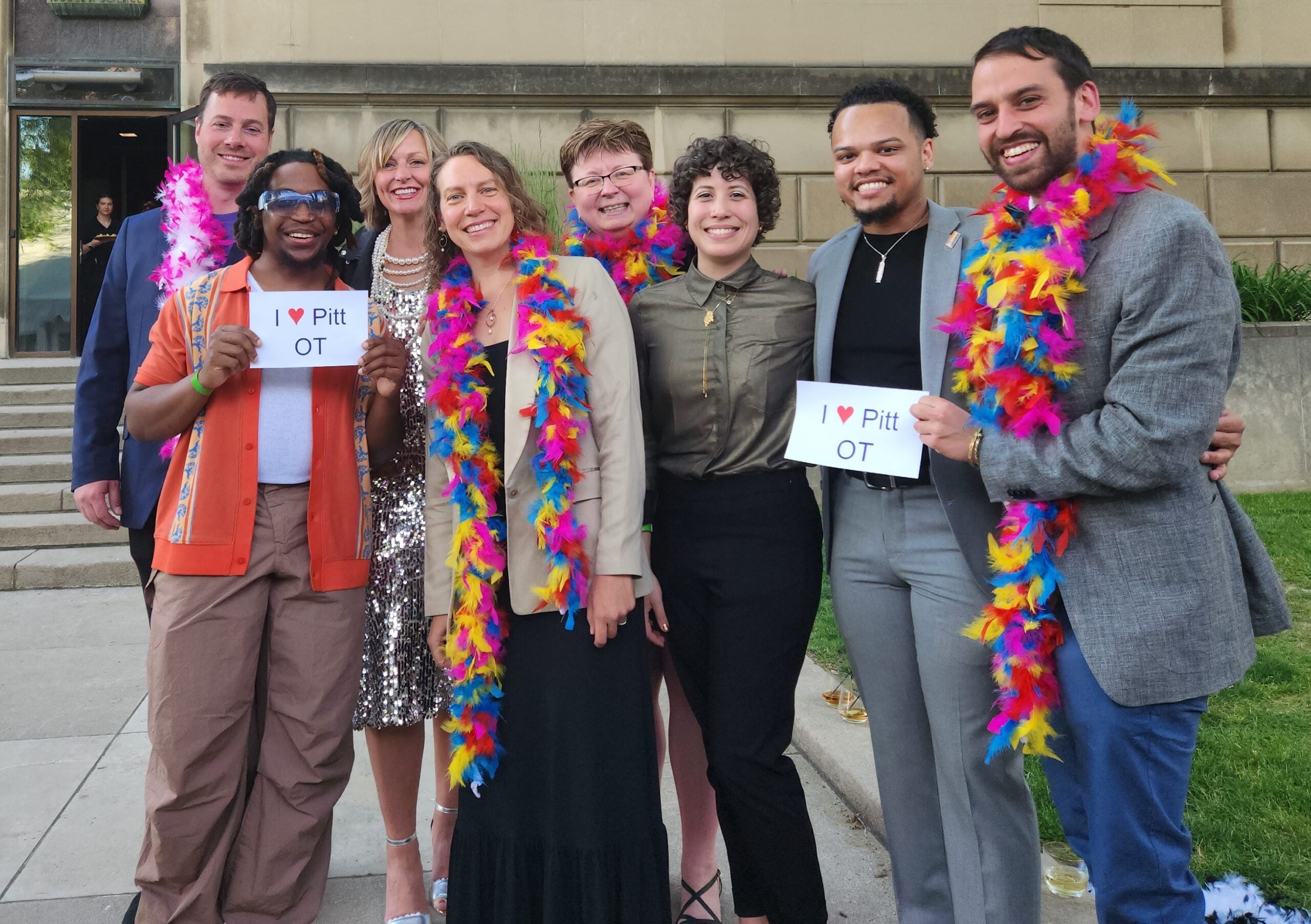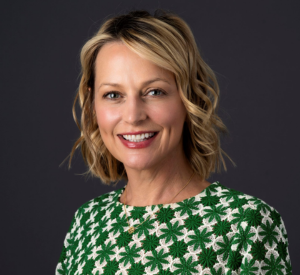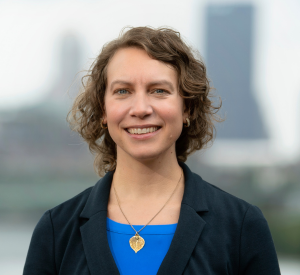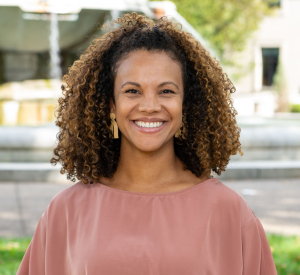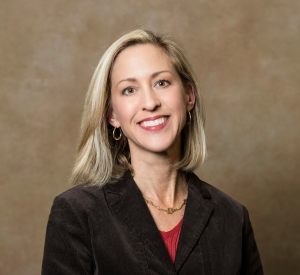In order for our communities to have a bright future, it requires bright young minds to lead them there. Pitt’s School of Health and Rehabilitation Sciences (SHRS) is proud to share that two students have been named Allies for Health + Wellbeing’s 2023 Bright Young People. The honor recognizes young people in Pittsburgh who are making a difference in their communities through their work, art or activism and particularly in the areas of diversity, equity and inclusion.
Tana Pierro, a doctoral student in the Department of Occupational Therapy (OT), and Deionte Harrilla-Gray, a master’s student in the Department of Physician Assistant Studies (PAS), were nominated by faculty in their departments and recognized with the award alongside 10 other Bright Young People at the Allies Ball in May. Both students are not only passionate about becoming health care providers, but also influencing change within the academic system to improve inclusivity and ultimately how marginalized and underrepresented communities access their basic right to health care.
Bringing Gender Affirming Care to the OT Curriculum
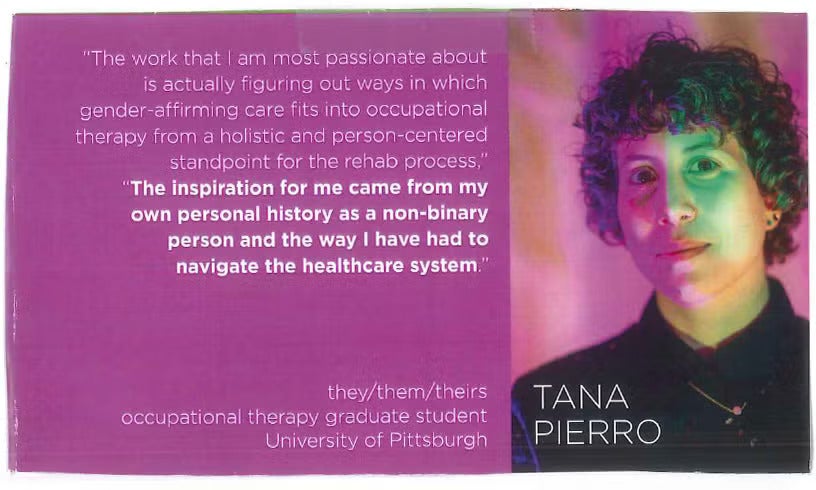
Pierro’s life has always been one of living as genderqueer/nonbinary. The past 15 years have marked new adaptations and inclusivity in the cultural vocabulary that have helped them to affirm their identity and live more openly as themself. In this time, Pierro has also seen a noticeable shift in how the LGBTQIA+ community is discussed in American culture and in doctor’s offices. However, a more formidable change in health care needs to happen, not just at the clinic, but in the education of health care students.
“The larger barrier I see is the way our educational institutions are integrating and teaching the care of minority populations. Our education system tends to educate to the care of the cis, heterosexual majority, so there is no wonder that our practitioners are graduating without an understanding of how to care for the rainbow community,” Pierro explains.
An entry point to LGBTQIA+ patients trusting their health care provider is whether they use and respect the patient’s chosen pronouns, which demonstrates cultural awareness and respect, understanding and acceptance of their identity. Unfortunately, many in the community experience negative interactions at clinics, which lead them to forego health care and contribute to LGBTQIA+ people suffering disproportionately from health issues. It wasn’t until Pierro was 31 years old that they found a provider who would respect their pronouns. That is long past the time when any adult should feel comfortable seeking care from a trusted health care practitioner.
Making an Impact on the Future of Health Care
Pierro is using their life experiences to help direct how the OT Department teaches gender affirming care, a range of social, psychological, behavioral and medical interventions designed to support and affirm an individual’s gender identity when it conflicts with the gender they were assigned at birth. The timing is perfect for what OT leadership had begun a few years ago. Assistant Professor Jennifer White, who is Pierro’s advisor says, “I think our department tries to represent diverse patient populations in our courses and we’ve expanded what we offer, but Tana has really taken what we’ve started, and pushed it to be more authentic.”

White and other OT faculty have implemented several class activities to lay the foundation for gender affirming care in their courses. Students learn to use nonbinary gender pronouns by reading transgender patient case studies, practicing their use with other students in class and taking online quizzes. White also includes activities where students advocate for clients who experience gender bias; demonstrate the use of and safety concerns for chest binding; learn about adaptable binders and bras for individuals with upper extremity weakness; and become more knowledgeable about resources for clients. Even with these curriculum enhancements, White and the department recognized that they needed to do more.
With Pierro’s leadership and the support of OT faculty and Chair Juleen Rodakowski , the department has been able to elevate their initial forays into inclusivity training and go further. “Not just with one or two examples of gender affirming care,” says White, “but to think of it in a broader spectrum.”
One of Pierro’s most impactful contributions was leading the department’s first gender affirming care seminar for students, staff and faculty that centered on how occupational therapists could better serve the queer community. They presented the use of activities for daily living (ADL) materials that help LGBTQIA+ people with self-expression and confidence, which included breast forms, packers, alternative undergarments such as pocket bras, binders and gaff panties, and binding tape. Additionally, Pierro covered acute and post-operative OT clinical care for those in the rainbow community seeking various types of gender affirming surgeries.
Over 50 people attended the seminar, which sent a clear message that there is interest in this type of education. Pierro’s work is being incorporated into OT class modules so that students and faculty will become more adept at providing much needed health care to the LGBTQIA+ community.
Watch Pierro’s Bright Young People interview
Supporting Diversity with the Pitt Black Pre-Health Panel
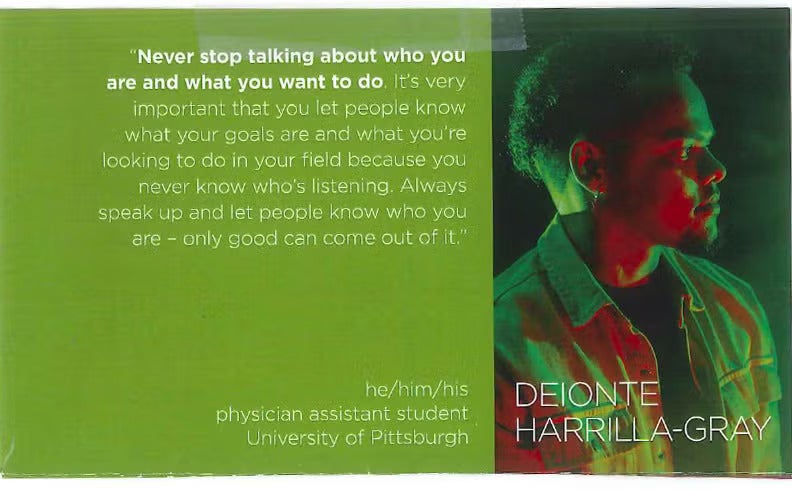
“As a first-generation student, PA stood out to me because of the versatile career and the program’s length. We don’t have many Black and gay providers so I am hoping to increase the diversity there.”
When he was researching physician assistant (PA) graduate programs, Harrilla-Gray reached out to PAS Assistant Professor and Vice Chair for Equity, Inclusion and Community Engagement Kathryn Reed to learn more. They had frank conversations about Pitt and whether it was a safe space for a Black man to be a graduate student. Having that connection with Reed was important.
“As a first-gen student,” he explains, “you go into higher education basically blind. This world is full of opportunity. However, if you don’t know where to go or don’t have those connections, it can be rough.” Now a graduate student in the PAS master’s program, he is modeling this kind of representation to Pitt’s Black undergraduate students.
“I created the Black Pre-Health Panel, which consists of Black graduate students in the various health professions, to help undergraduates find the information they need to be successful applicants in the future,” Harrilla-Gray says.” The goals are to decrease barriers and to increase representation.”
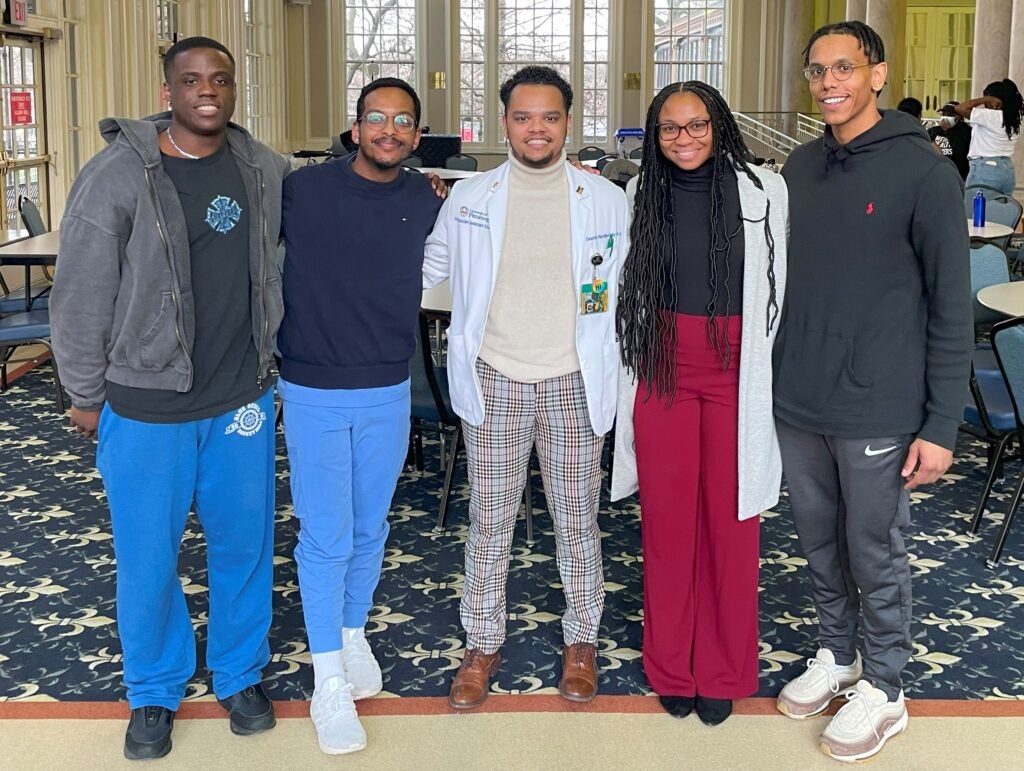
To reach students and mentors across the Pitt Health Sciences, Reed and Harrilla-Gray approached Andrea Hergenroeder, an associate professor in the SHRS Department of Community and Health Services and Rehabilitation Science who is now the director of the Pitt Pre-Health Resource Center, which helps students from underrepresented backgrounds and identities with mentorship, tutoring and networking. The Center had never done events specifically for Black students, however, so Hergenroeder was eager to help make Harrilla-Gray’s idea a reality. She leveraged her connections to identify representatives from across Pitt in the fields of occupational therapy, physical therapy, PAS, dentistry and medicine.
Mentors Breaking Barriers and Guiding the Way
Under Harrilla-Gray’s leadership, the Black Pre-Health Panel launched its first in-person meeting in Fall 2022 with 43 attendees then again in Spring 2023. Students asked standard questions such as why the panelists chose their career or graduate study path, if they’re glad they chose it, as well as more focused questions on the diversity of the cohorts and faculty. The panel discussed the variety of health care career options such as physical therapy, occupational therapy, counseling and dietetics that may better align with the students’ interests and abilities and would set them up for success.
First-generation students asked for advice on the challenges of getting into graduate school, from what to do before applying to navigating the process itself. Reed observes that without family members or mentors to guide them, their experience could become one of wasted time and money, and oftentimes applying to a program that isn’t the right fit. Faced with continual challenges, the student can lose faith and give up on their goal. Having these Black Pre-Health Panel mentors provides the students with knowledge, confidence and connections that keep their dreams alive.
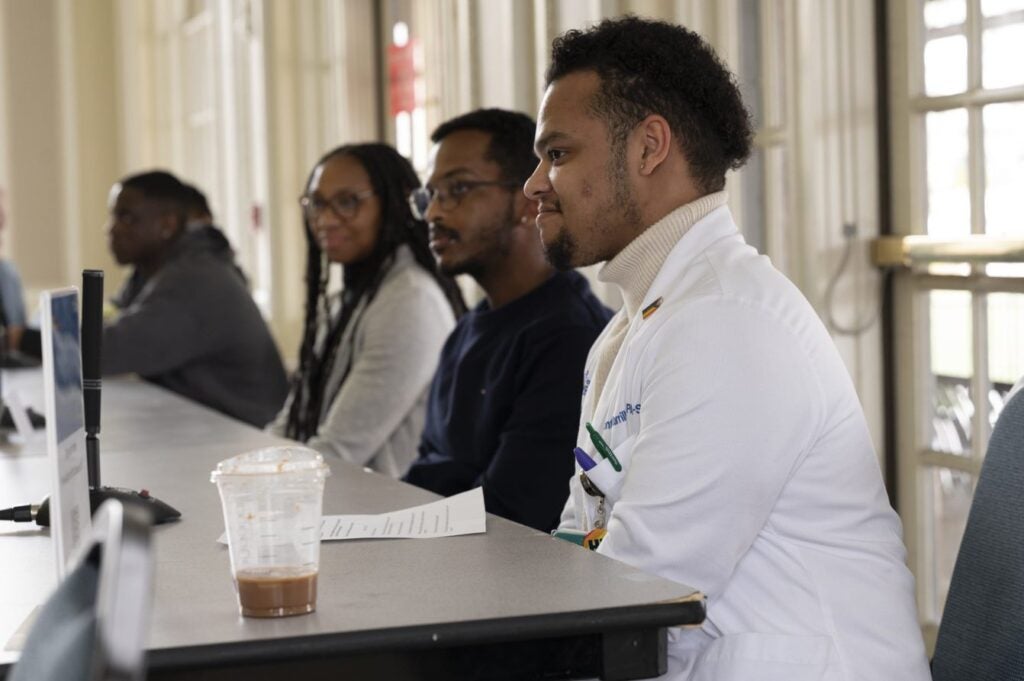
Harrilla-Gray will be graduating in December, but the work and outcomes of the Black Pre-Health Panel have just begun as the torch is being carried by students in the new cohorts. Reed is optimistic that the Black Pre-Health Panel will continue to welcome Black students into a safe environment where they feel supported and empowered to make educated decisions about their academic and professional journey. Then, as health care providers, patients will see themselves reflected when they seek out care, leading to better long-term quality of care.
For more information on upcoming Black Pre-Health Panel events, contact Kathryn Reed at kjr34@pitt.edu.
Watch Harrilla-Gray’s Bright Young People interview
Reed summarizes why it is so important that work like Harrilla-Gray and Pierro’s is put into action. “My hope is that this work leads to an increasingly diverse provider pool that allows patients to select providers that they trust. This means ensuring that we have a diverse group of providers available in every health system who represent an expansive variety of identities and lived experiences which allow them to connect more fully with the community that they serve.”

